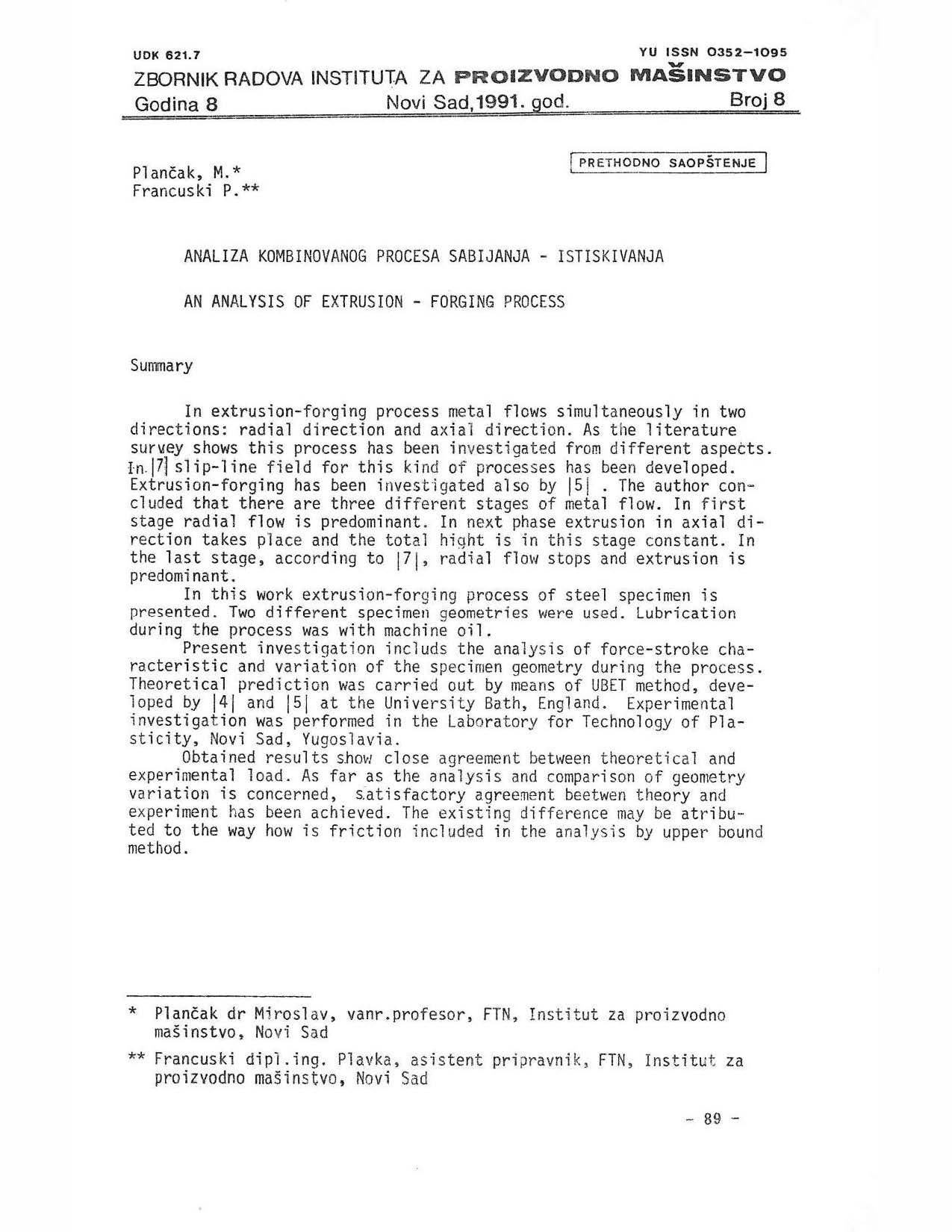
Published 1991-12-01
abstract views: 155 // FULL TEXT ARTICLE (PDF): 115
Keywords
- extrusion,
- forging,
- metal flows
How to Cite
Copyright (c) 2023 Journal of Production Engineering

This work is licensed under a Creative Commons Attribution 4.0 International License.
Abstract
In extrusion-forging process metal flows simultaneously in two directions: radial direction and axial direction. As the literature survey shows this process has been in' estimated from different aspects. fn.171 slip-line field for this kind of processes has been developed. Extrusion-forging has been investigated also by 151 The author concluded that there are three different stages of metal flow. In first stage radial flow is predominant. In next phase extrusion in axial direction takes peace and the total high is in this stage constant. in the last stage, according to 171, radial flow stops and extrusion is predominant. In this work extrusion-forging process of steel specimen is presented. Two different specimen geometries were used. Lubrication during the process was with machine oil. Present investigation includes the analysis of force-stroke cha-richteritic and variation of the specimen geometry during the process. Theoretical prediction was carried out by means of ABET method, developed by 141 and 151 at the University Bath, England. Experimental investigation was performed in the Laboratory for Technology of Plasticity, Novi Sad, Yugoslavia. Obtained results show close agreement between theoretical and experimental load. As far as the analysis and comparison of geometry variation is concerned, satisfactory agreement between theory and experiment has been achieved. The existing difference may be attributed to the way how is friction included in the analysis by upper bound method.

